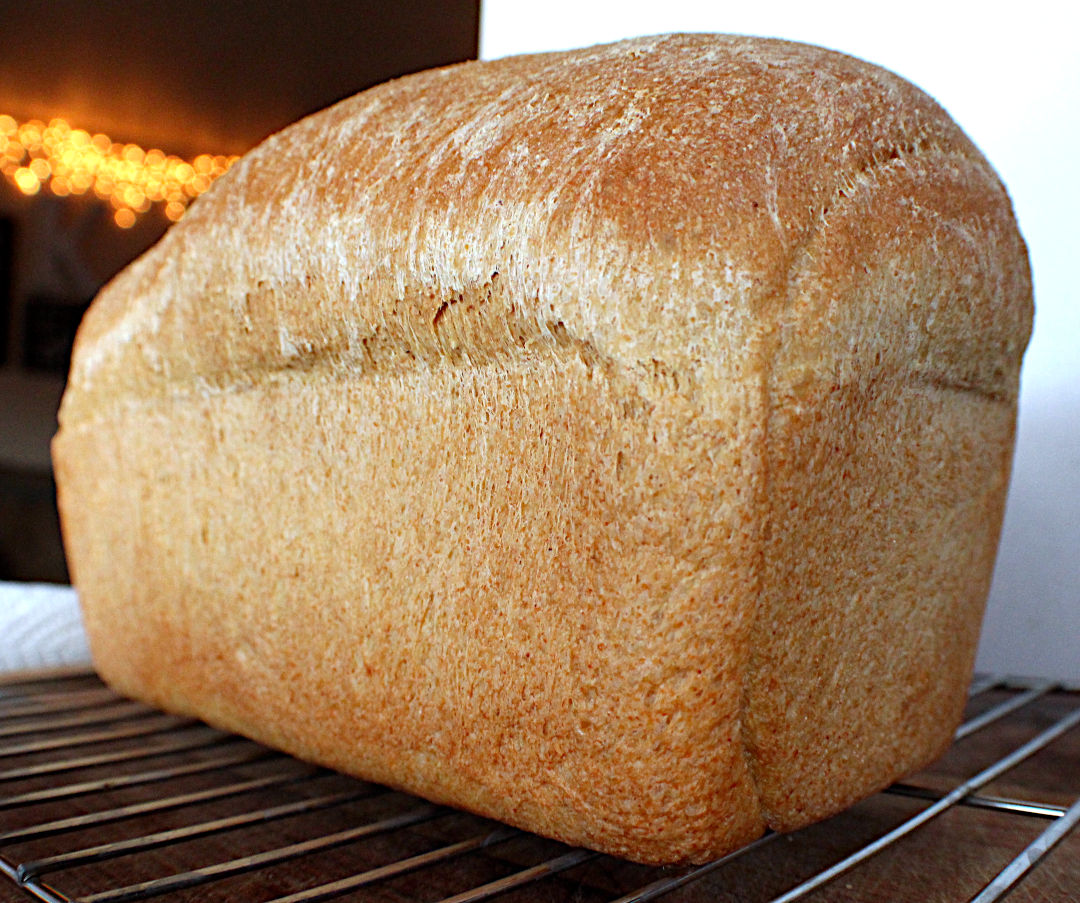3 – It’s just easier. I used to put my yeast in a bowl with my sugar and let it activate for 10 minutes. That’s all well and good, but let’s take out steps if we don’t need them to make the process more simple. Are you with me?! If, however, you are in a hurry, then you can certainly use warm water. If you don’t have a thermometer, then a good temperature gauge is to think of the yeast going into a bath. I’m talking about a literal tub. I don’t know about you but I LOVE HOT baths. How hot can you make a bath for you with out burning yourself? That’s the perfect temperature for your yeast.
Ok, next you’ll add the yeast, oil and sweetener of choice. I love molasses because of the mineral content as well as the rich color that it makes. Did you know that in just 1 TBS of molasses there’s 20% of calcium, 48% copper, 31% magnesium and 31% of manganese! What?! I love finding food
Next you’ll add the flours. Start with 3 cups of each the white and wheat flours. Top this off with the salt to create a barrier between the salt and the yeast. For more information on why to do this, scroll down to the bottom in the FAQ’s section.
Turn your mixer on low and let all the ingredients come together as best as they can. Turn off your mixer and feel the dough with your fingers. You’re looking for a consistency that’s not too soft/loose and not too dense. Go for something right in the middle. This is called “baking by feel”. Once you understand what the density of your bread feels like then you’ll never have to worry if you’re doing it right in the mountains or at the ocean. “That’s what she said!” – Michael Scott.
If you’re dough feels very loose, then add 1/2 a cup of whole wheat flour and 1/2 a cup of white flour. If it feels like it’s getting close or if you’re just not sure, then add 1/4 cup of each. Turn on your mixer again and let all the flour get fully mixed in. Then repeat that process of feeling, adding and mixing until it feels not too soft and not too dense, just right…like Goldilocks.
If you accidentally go overboard and add too much flour, you can always add in some water. I would start out with a 1/4 cup, mix it in and feeling it. Continue this process until you’ve reached the right consistency.
